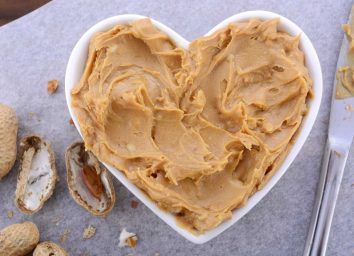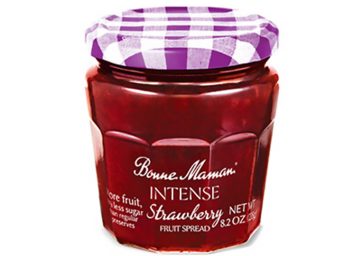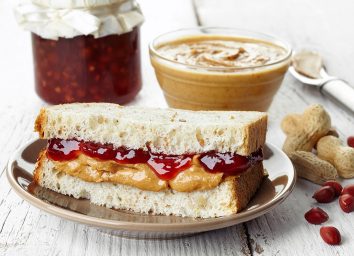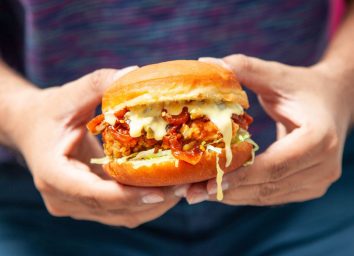This Is the Difference Between Jam, Jelly, and Preserves
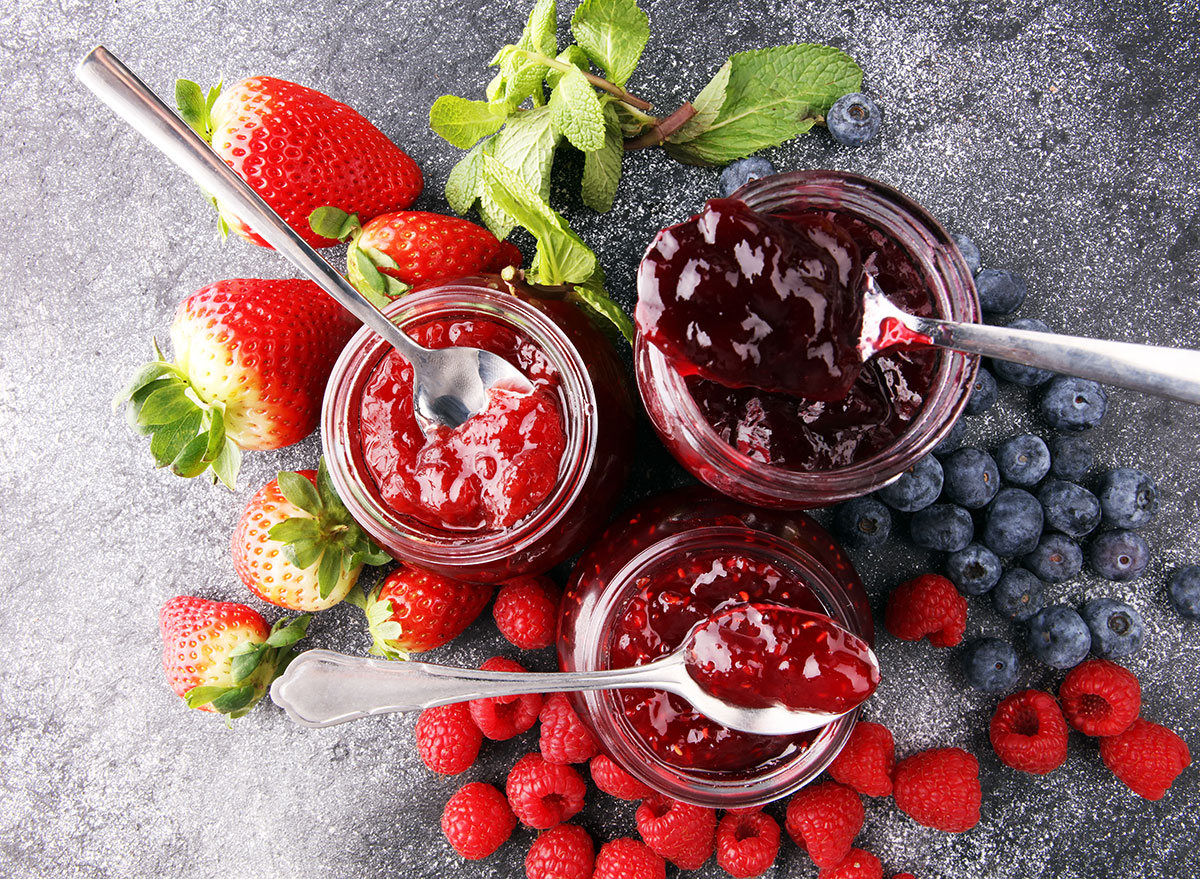
It’s peanut butter‘s partner in crime and the ultimate dessert filling, and it pairs perfectly with toast. But when it comes to choosing your fruity spread, do you pick jam, jelly, or preserves? Did you ever wonder what sets the fruity toppers apart? We did, which is why we spoke to a few experts to discover the difference between jam and jelly and their close cousin, preserves.
Jam
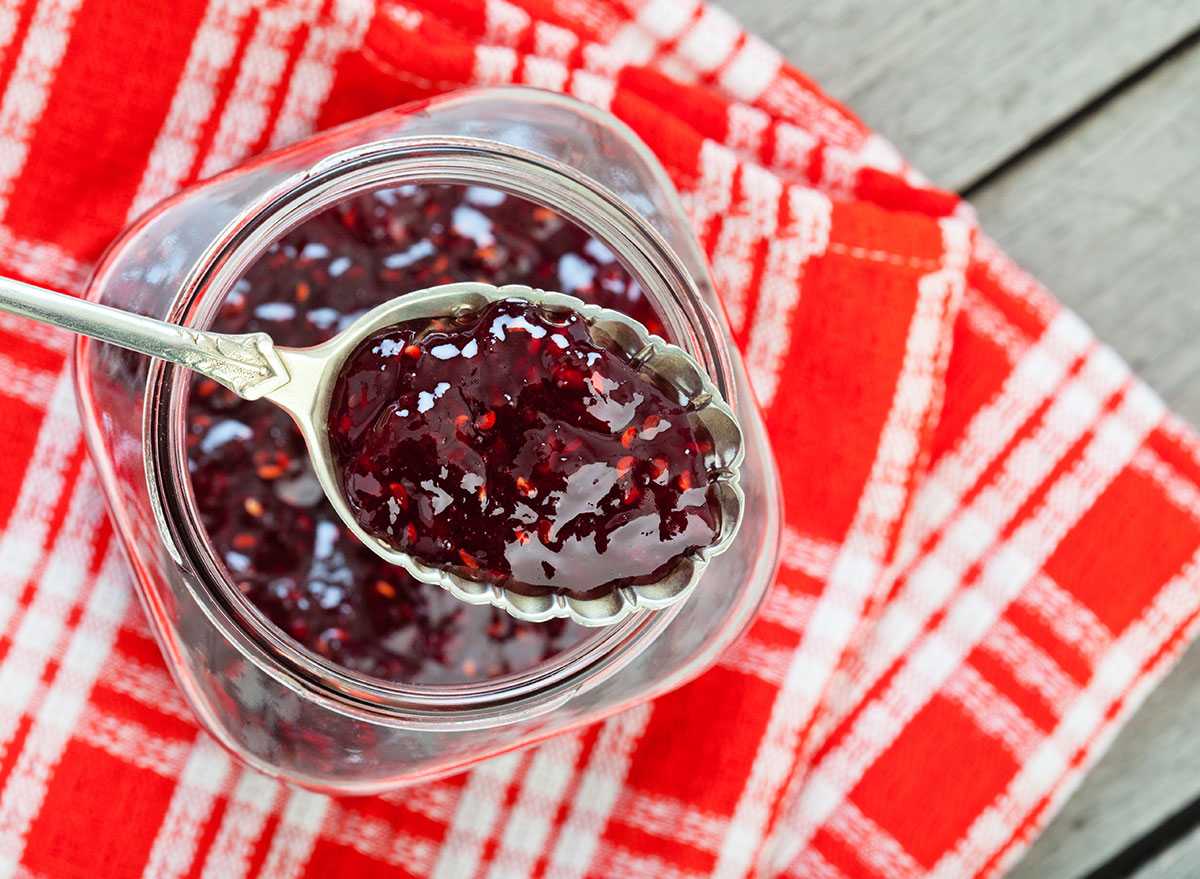
“Jam begins with fresh fruit that’s cooked until it breaks down into the consistency of a sauce,” Einat Mazor, Owner & Chef at Extra White Gold gluten-free flours and mixes, tells us. “It is a much thicker spread than jelly, and is made from chopped, crushed, or puréed fruit, and sugar. Pectin—a water-soluble fiber that occurs naturally in most fruits, with the highest concentration in the peel or skin—is also added to reach a thicker consistency,” she says, adding that jams have more body to them.
What’s more, jam typically contains fruit pulp. “High-pectin fruit such as lemons, apples, cranberries, and currants will set well once the fruit and sugar have been boiled and the pectin is activated. You may need to add commercial pectin to lower-pectin fruit such as blueberries, ripe cherries, apricots, and strawberries.”
Jelly
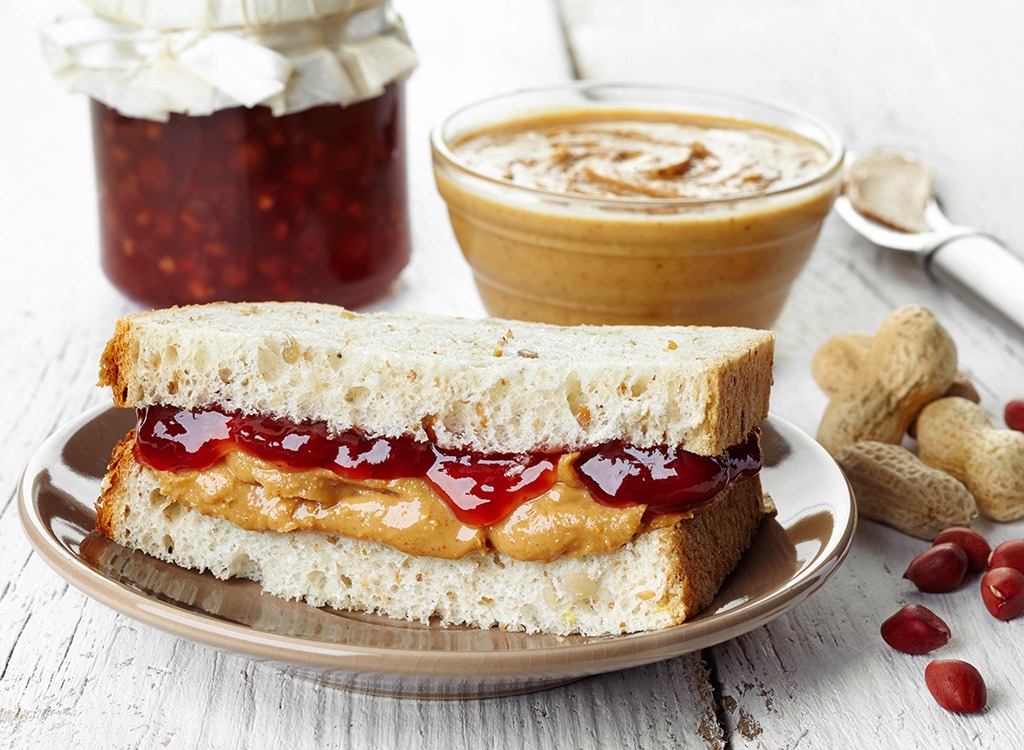
“Jelly is a fruit spread made from fruit juice and pectin,” Mazor tells us. “In the presence of heat, acid, and sugar, the pectin helps the mixture thicken and gives jelly (as well as jam and preserves) their spreading potential. After the initial cooking, jelly is strained through a muslin bag or ‘jelly bag’ to remove bits of fruit pulp,” which explains why jelly looks more transparent than its spreadable relatives. Jelly is the smoothest out of all three spreads, and its flavor is sometimes overpowered by the gelatin, Claudia Sidoti, Head Chef and Recipe Developer at HelloFresh, tells us. “That’s why preserves are often used in cooking or baking to bring back the fruity flavor.”
Preserves
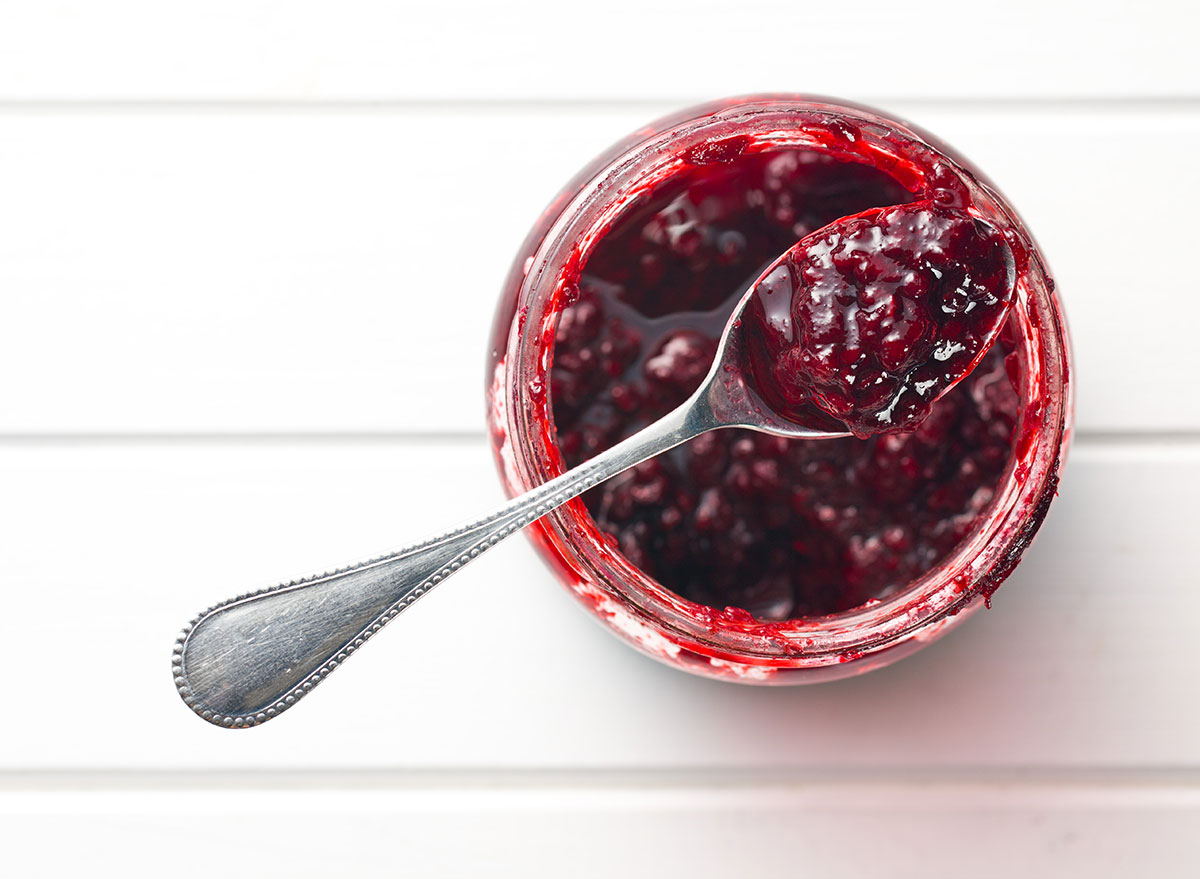
Preserves are a thick fruit spread made from fruit cooked with sugar, Mazor says, adding that preserves require large pieces of the fruit, or the whole fruit, unlike jams and jellies. That’s what lends preserves their differentiating, rustic texture. “Preserves use most of the fruit and have smaller pieces of chopped fruit mixed with sugar to retain the freshness. They’re then mixed with a syrup or jam to hold them,” Sidoti says.
Verdict: What’s the difference between jam, jelly, and preserves?
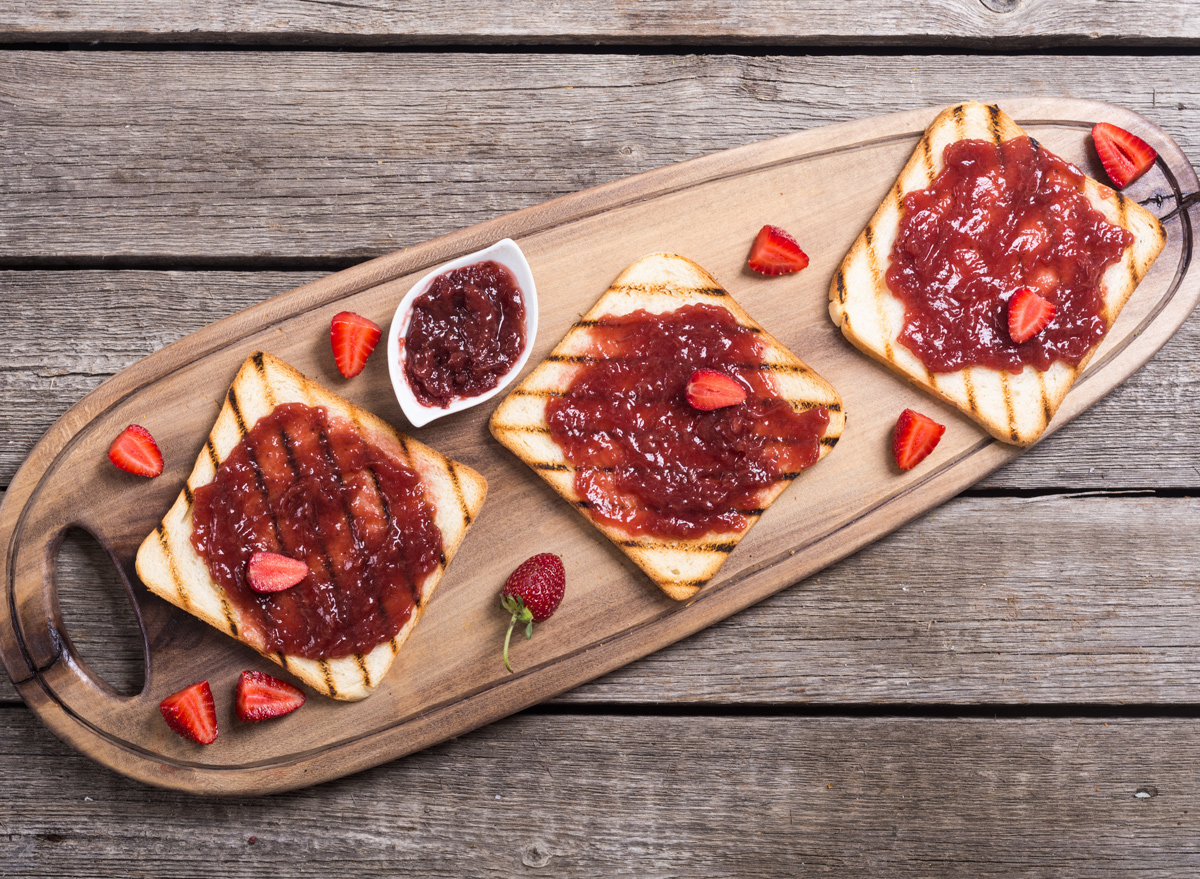
“Jams, jellies, and preserves all contain the same ingredients, but the main difference is in how you process the fruit,” pastry chef Allison Osorio, who helms the dessert program at Otium restaurant, says. While jelly has the smoothest texture of them all, jams are a bit thicker, and preserves boast the most body, thanks to their chunky fruit pieces. Preserves use the least amount of pectin since you’re working with the larger pieces of the fruit, Osorio says, adding another interesting distinction: “Marmalade is the same as a preserve, but is a term only used for citruses.”
At the end of the day, it all depends on your preferences. If you prefer a smooth consistency, go for jelly. If you’re more into a thick strawberry spread on your PB&J, buy a jam. And if you’re looking for a more chunky mouthfeel, opt for preserves or an orange marmalade.
